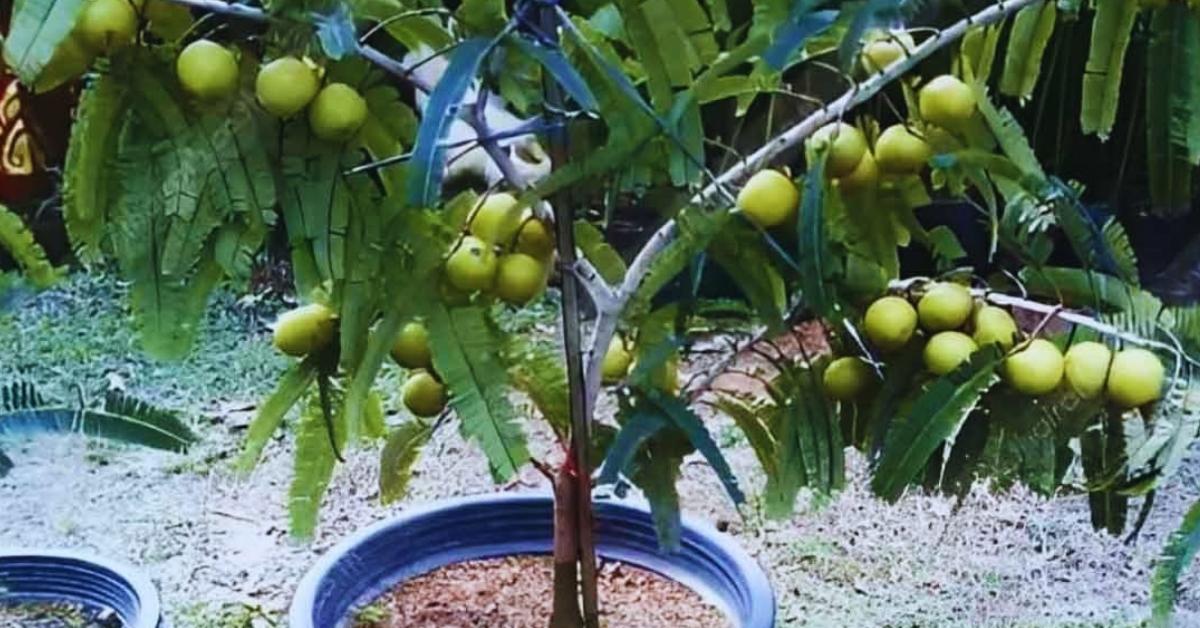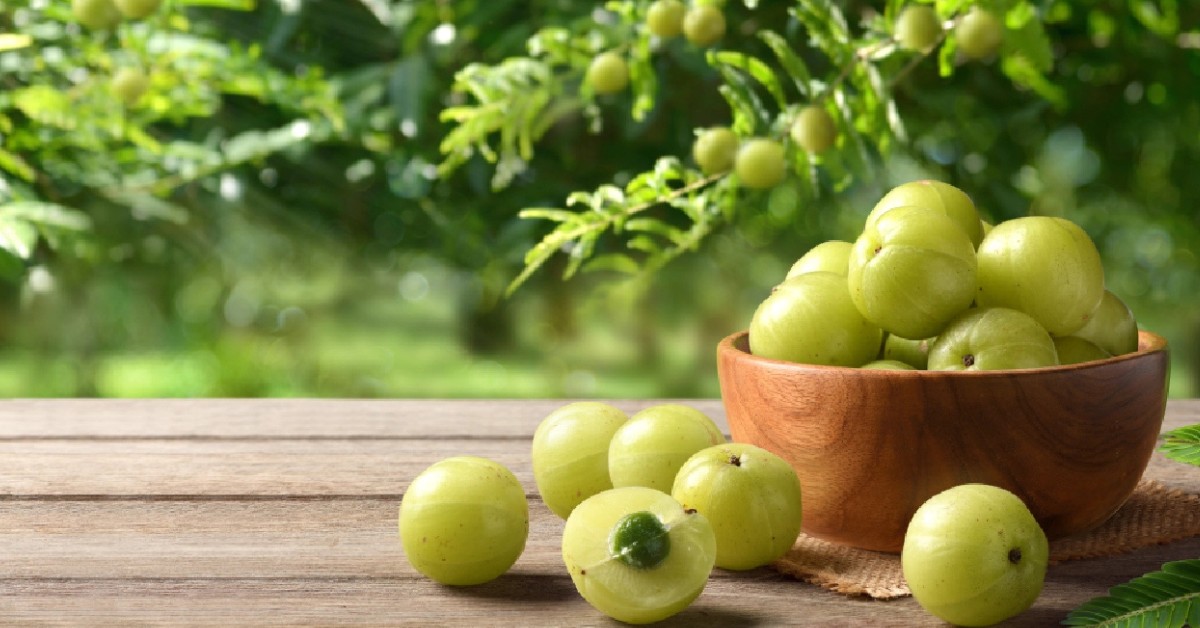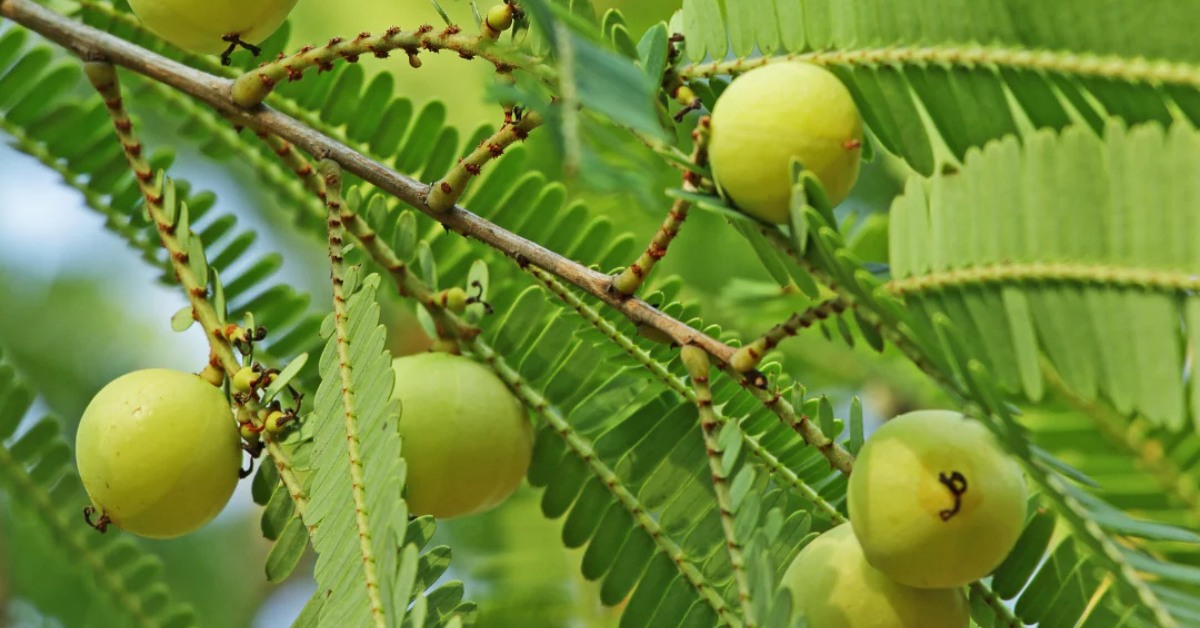In recent years, amla, the Indian Gooseberry, has captured the attention of health enthusiasts and gardeners alike. Known as a “superfruit” for its exceptional nutritional profile, amla is bursting with vitamin C and antioxidants that support immune health, aid digestion, and promote radiant skin and hair.
Traditionally grown in orchards across India and South Asia, this fruit has proven to be surprisingly versatile. But have you ever thought of cultivating this fruit at home? Its ability to grow in pots or containers makes it an excellent choice for urban gardeners, bringing the benefits of this ancient medicinal plant right to balconies, terraces, and compact home gardens.
The monsoon season, with its gentle rains and moderate temperatures, offers the ideal conditions for planting and growing amla at home. Whether you have a balcony, terrace, or small garden, growing this tree in a container is feasible and rewarding. We will walk you through the process, from choosing the right pot to harvesting your homegrown fruit.
Step-by-step guide to growing amla in containers
1. Selecting the right pot
The foundation of successful container gardening lies in the choice of pot. For amla, opt for a container at least 18 to 24 inches (45–60 centimetres) deep and wide to accommodate its deep root system. Terracotta and ceramic pots are ideal for not only they let the soil breathe but also regulate the temperature and moisture.

You must check for appropriate drainage by placing a layer of coarse gravel or broken pottery shards at the pot’s base before adding soil. This prevents waterlogging, which can be detrimental to the roots.
2. Preparing the soil
Amla survives in well-drained and fertile soil with a slightly alkaline to neutral pH (six to seven and a half. Prepare a soil mix with equal parts garden soil and organic compost, refined with a handful of coarse sand or perlite for improved drainage.
If your native soil is acidic, add a small quantity of agricultural lime or wood ash to gently increase the pH, making sure the plant can absorb nutrients effectively.
3. Choosing the right plant
For quicker fruiting and better crop quality, select a grafted sapling from a nursery. Grafted amla trees typically start bearing fruit within three to four years, whereas seed-grown trees can take seven to eight years.
When buying, look for a young and healthy sapling, approximately one to two years old. It should be free from pests and diseases, have a sturdy stem, and robust roots.

4. Timing your planting
The monsoon months, from June to September, are ideal for planting amla in containers. The natural rainfall provides consistent moisture, reducing the need for manual watering, thus helping young roots hold their place firmly in the soil. The cooler temperatures during this period also minimise transplant shock.
Transplant shock is the stress a plant goes through after being moved to a new location, often causing wilting, slowed growth, or leaf drop as it adjusts to its new environment. Think of it as the plant’s version of jet lag!
Avoid planting during the hot summer months or dry spells, as young saplings may struggle under harsh conditions.
5. Positioning and sunlight requirements
Amla is a sun-loving tree that requires six to eight hours of direct sunlight daily to grow and fruit well. Place your pot in a sunny spot, such as a balcony or terrace, where it can receive ample light.

If you live in an area with intense afternoon sun, a bit of shading during the hottest hours can protect your plant from leaf scorch, though it still needs enough light to flourish.
6. Watering schedule
During the first year of growth, you have to keep the soil consistently moist to help the young amla plant establish a strong root system. Water the plant regularly, especially during dry spells, but be careful not to overwater. The tree does not tolerate waterlogged soil, which can lead to root rot, a common issue in potted plants.
During the monsoon season, natural rainfall usually provides sufficient moisture, but it is important to check that excess water is draining properly from the pot.
As the tree matures, its roots grow deeper and stronger, making it more tolerant of occasional dry periods. However, for optimal growth and fruit production, it still benefits from a steady and moderate watering schedule.
7. Feeding and fertilising
Healthy soil nutrition is essential for a fruitful amla tree. Apply organic compost or well-rotted manure twice annually, once in early spring and once post-monsoon.

In addition, use a balanced fertiliser (for example, 10:10:10 Nitrogen, Phosphorus, Potassium ) once during the growing season to provide essential nutrients. Organic inputs like neem cake or seaweed extract can enhance soil vitality and help protect against pests.
8. Pruning and general care
Pruning is important for keeping your potted amla tree healthy and productive. Perform light pruning in late winter or early spring, just before new growth begins. Focus on removing dead, damaged, or overcrowded branches to improve air circulation and allow more sunlight to reach the inner parts of the plant. This helps reduce the risk of disease and supports healthier and balanced growth.
Avoid heavy pruning during the growing season, as it can stress the tree, hinder photosynthesis, and delay fruiting. Amla trees respond best to gentle and regular maintenance rather than drastic cuts.
9. Managing pests and diseases
Although amla is a tough plant, it can occasionally attract common pests such as aphids, mealybugs, scale insects, and spider mites. These pests typically feed on the sap of the plant, weakening it over time and potentially affecting fruit production. It is important to inspect the plant regularly, especially the undersides of leaves and along stems, where pests often hide and reproduce.

At the first sign of trouble, such as sticky residue, discoloured leaves, or visible insects, treat the infestation promptly using organic methods like neem oil spray or insecticidal soap. These are effective yet gentle options that will not harm beneficial insects or contaminate your fruit.
10. Fruit development and harvesting
Grafted amla plants usually start to produce flowers within three to four years after planting. The flowers are small and pale greenish-yellow in colour, growing in tight clusters along the branches. These flowers eventually develop into the familiar round, glossy berries of the amla tree. The fruit typically ripens by late autumn or early winter, depending on your local climate.
It is important to harvest the berries when they are fully grown and still firm. Picking them at this stage will guarantee the highest nutritional content and best flavour. If left to overripen, the berries become softer and lose much of their vitamin C and antioxidant benefits. Additionally, overripe fruits are more prone to spoilage and may attract pests.
With just a little care and patience, your homegrown amla tree can become a lasting source of nourishment and joy, and is a small step toward a greener, more fulfilling lifestyle. Why not start this monsoon?
Edited by Saumya Singh
No comments:
Post a Comment